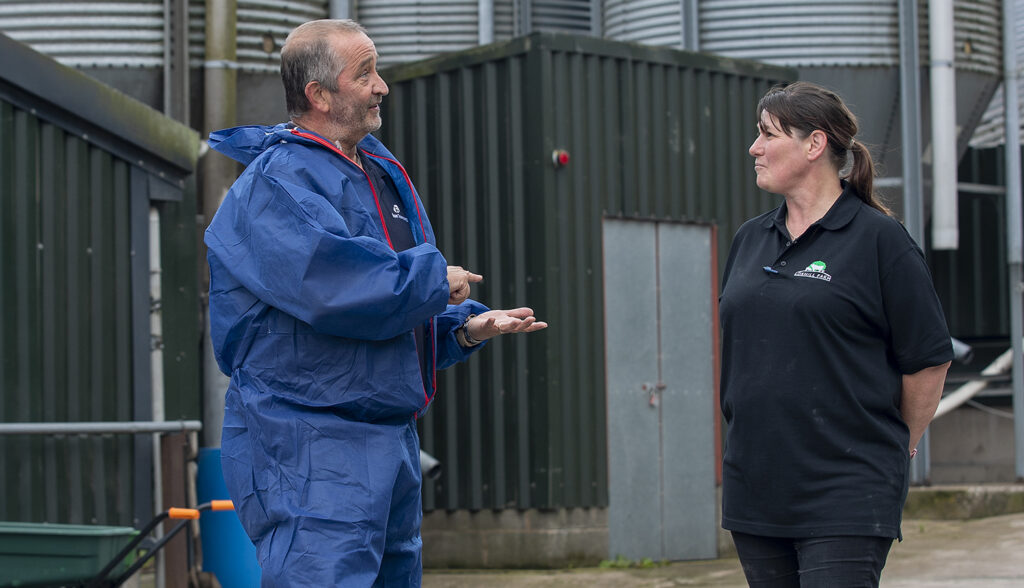Pig producers are being urged to tighten their biosecurity, as government data highlights rising cases of swine dysentery.
The latest figures from the GB Pig Surveillance Dashboard, run by the Animal and Plant Health Agency (APHA) and SRUC, reveal that confirmed cases of swine dysentery caused by Brachyspira hyodysenteriae have increased from just eight in 2021 to 54 in 2024 — with numbers rising year-on-year.
The Significant Diseases Charter, run by AHDB, reported 13 cases of swine dysentery in seven counties up to early November this year, including one in Scotland.
The latest notification was of a new Swine Dysentery case on a pig farm in North Yorkshire. Routine tests were carried out on the farm on October 24 and swine dysentery was confirmed by laboratory tests on November 5. Strict biosecurity and biocontainment measures are currently in place and there will be be full depopulation of unit followed by cleaning and disinfectant.
Swine dysentery is an infectious bacterial disease that affects growers, finishers and younger breeding stock and remains a major concern for the pig industry due to its welfare, production and financial impacts.
Biosecurity specialist Nigel Bennet, from Roam Technology, said the increase highlights a breakdown in biosecurity both within and between pig units — and urges farmers to take immediate action.
“We all know that African Swine Fever is knocking at our door,” he said. “This data shows there are already biosecurity weaknesses that are allowing diseases like swine dysentery to spread. Every movement of people, vehicles or animals has the potential to bring new infections in or spread them around the site.”
AHDB recently relaunched its Muck Free Truck campaign to reinforce the importance of clean vehicles entering farms and to give producers confidence to turn away those that aren’t.
AHDB’s Lauren Turner agreed that the industry must work together to raise biosecurity standards. “There’s still stigma around reporting swine dysentery — nobody wants to be ‘that one’ — but we need to tackle this as an industry. The earlier we can alert others, combined with good biosecurity, the better,” she said.
To help farmers identify weaknesses, AHDB has also obtained a 12-month licence for a BioCheck tool, used by vets to assess individual farm biosecurity and highlight areas for improvement.
Subclinical cases
Veterinary surgeon Dr Annie Davis from The George Vet Group said they have also seen an increase in mild or subclinical cases where clinical signs are less obvious.
“In less dramatic cases, you might just see loose stools, particularly in slatted systems,” she says. “The only way to know what you’re dealing with is to test — and that’s what we’re encouraging all farmers to do.”
Prompt diagnosis is vital so that control measures can be implemented quickly to limit spread both within and between farms.
“Internal biosecurity is just as important as external,” Dr Davis added. “Look closely at pig movements, shared equipment and medication protocols. Where disease pressure is too high, partial depopulation or repopulation may be the only effective option.”
“Good biosecurity isn’t just about stopping swine dysentery,” said Mr Bennet. “It’s about protecting the overall health, productivity and reputation of your farm. By keeping infectious diseases out — or stopping them spreading — producers can safeguard pig welfare, reduce antibiotic use and protect their bottom line.”
Biosecurity measures
Roam Technology recommends producers focus on the following measures:
- Strict visitor protocols
- Vehicle controls
- Clean water supply – Maintain water hygiene across all housing by treating with an effective disinfectant such as Huwa-San TR-50, which doesn’t affect taste or intake.
- Clean–dirty area separation
- All-in, all-out systems
- Rodent and wildlife control
- Quarantine new stock
- Routine monitoring and diagnostics.




